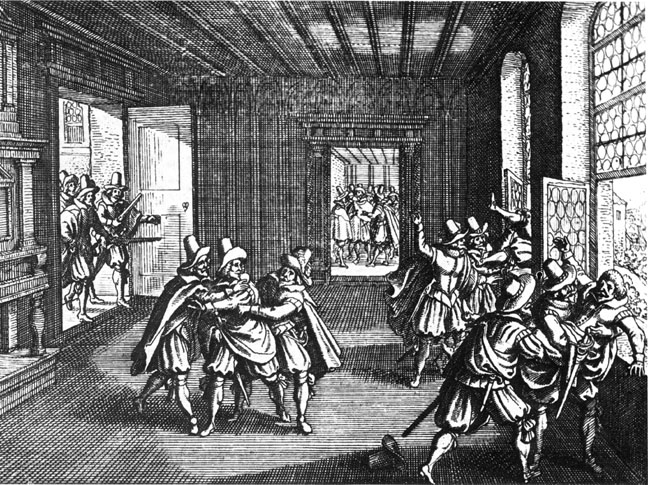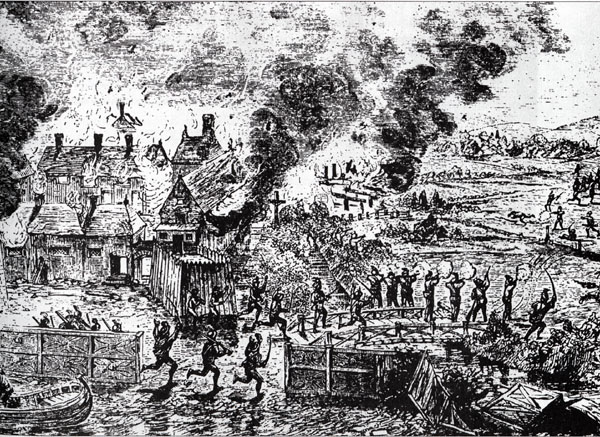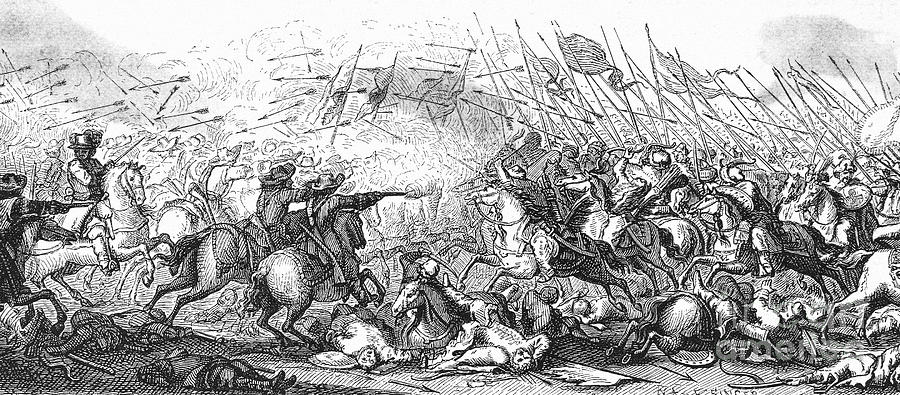1
After thinking it over for a while, I decided I should probably work on a timeline for a time period that I'm more adjusted to. All I can do is apologize for barely working on lots of other ones, but this one seems more suited to a time period I have adapted to, especially because of the collaborative timeline we did a while back. Also, I will try to go more into detail with this and try to be less all over the place, explaining things. And so, let the timeline begin!
It is, in the course of our history, our ultimate goal to create the most democratic state possible, and usher a golden age of culture and the arts.
- Robert van Valkenburgh, on the independence of The State of New Holland.
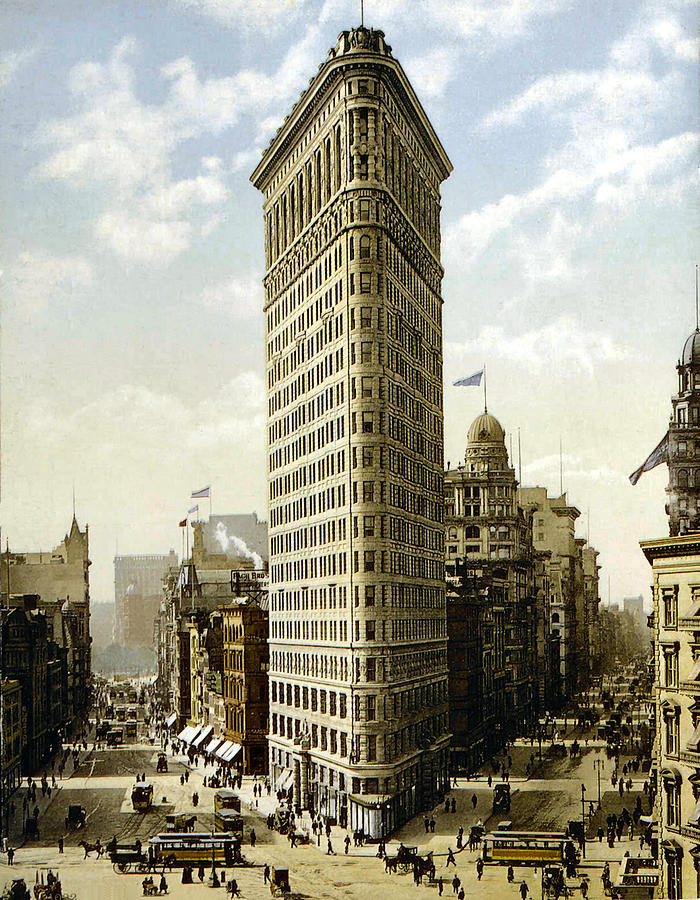
The New Athens
Written by AmericanAdam
The peoples of the United Provinces had looked to the west eagerly since their nation’s founding in 1568. Already many explorers had traveled to the overseas lands that held rich treasures, fur, tobacco, and even foreign animals. The turn of the century into the 1600s also brought with it an era of the Dutch Republic that will forever alter the course of history. The United Provinces of The Netherlands would have a golden age ushered in with their declaration of independence from Spain. Finally, by the year 1582, the Republic had gotten a significant advantage in the war and had the primary regions of the Netherlands protected. This is where we are now, with the people of the Netherlands growing more and more fond of that land out west…
This led to the first few explorers being hired and sent overseas by the Netherlands. The very first of these to go to the Americas in the future location of Nieuw Amsterdam was the English Henry Hudson. The reasons for his expedition were actually originally not intended to create a colony in North America, but instead to to find an easy “north-west passage” to get into Asia. Due to detailed enough maps, many, including him, knew that the St. Lawrence River ended before reaching the Pacific, and that the Northern Bay[1] was far too glaciated and icy, so it would be impossible to get past that. Thus, Hudson traveled across the Atlantic in 1606, reaching his first destination, the future English colony of Maryland[2].

Portrait of Henry Hudson
From there, he continued his route southward along the Eastern coastline, eventually reaching the to-be English colony of Cape Cod, rounding the large peninsula and continuing westward down the coastline. After noticing the small bay of Providence, he traveled up the river but had no luck at finding a passage. However, the discovery of this bay was not without loss, as the entire bay was claimed for the Dutch Crown, and was labeled on the map as “Anker Bay, a Dutch crown territory”.
The expedition continued westward again, this time reaching instead the future site of the capital of the future colony, New Amsterdam. The land here was once again claimed for the Netherlands, with a line running across the map at approximately 43 degrees north, and a line stopping the claimed area at around 45 degrees north. It was here, at the strait in between Long Island and the mainland when the first contact between the Dutch and the native Americans living there. The Lenape greeted them relatively warmly - at first. Tensions erupted after one of the crew members was caught stealing food, leading to the tribespeople attacking the crew. Luckily for them, they were able to return to their ship in time to depart.
This visit to the Lenape tribe was, however, enough to spread the Bubonic Plague to the tribe inhabiting the area. It ended up decimating the area, and the survivors eventually left and merged with other tribes, making “Manna-Hata” empty land fresh for the Dutch picking.
So, Hudson continued his route. His traveling up what would be called the “Hudson River”, named after him. However, as before, the river tapered off and was no longer large enough for ships to travel along. Disheartened, he returned down the river and eventually reached what he named “Staaten Island” in honor of the Dutch parliament. It was here when he decided to return home with the sad news of no northwest passage, when he arrived in 1609.
With the news of the lack of a Northwest Passage, the agitated Philip William decided to refocus his efforts in the New World. He would utilize the “unclaimed” land to the west and fit it to Dutch culture, creating the city of “Nieuw Amsterdam” on the site that connected Long Island to mainland North America.
Due to an absence of the Northwest Passage, France began to also refocus their efforts under King Henri IV, and the first few French colonists began being shipped into the city of “Quebec” in 1611, mostly made up of French Huguenots and other somewhat outcasts of French society. The colony steadily developed, although remained at a small population, only reaching around 2,500 after 3 years.
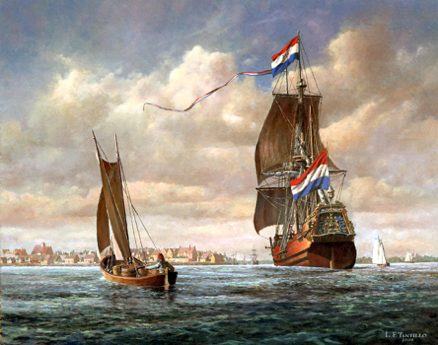
Several trade ships arrive in New Amsterdam
After the developments in Quebec City, Dutch migrants began arriving in New Amsterdam in January 1613. The first few colonists traveled with Cornelius Jacobsen May, a cousin of an important explorer of The Northern Bay. When he arrived, he used his skill in administration to begin a local government in the city. The first few colonists of New Amsterdam noticed that the land was strangely devoid of any life, yet they still ignored it and were happy to not have to deal with the natives living there. Anyway, Cornelius Jacobsen May decided to put his longtime friend and apprentice in charge of the city and local government temporarily while his would go on a mission with several new soldiers that had arrived. A few small galleys were created in New Amsterdam, the first ships created in the future maritime hub, and Cornelius set off with his new guards.

Portrait of Cornelius Jacobson May
They traveled up along the river as far as they felt was necessary, taking breaks when the tide was too harsh. After several days, a suitable location was found, and the guards and Cornelius settled down in a location upstream the river[3]. The fort’s name was decided to be Fort Willemstadt, Anglicised to Williamstown. The fort remained relatively small, but was well-manned in order to keep control over the region in the case of Indian attacks. After the fort was established, Cornelius once again returned south in late 1613, just in time for their first winter.
New Amsterdam was struggling with it’s food supply. A lot. The farmers in the surrounding area had no idea how to farm the crops in the region, and people began to drop dead from starvation. Another problem was the disease. Mosquitos were quite abundant to the colonists’ dismay, and they had to constantly deal with people dropping dead. Once the “Long Winter” had finished as spring rolled around, about a third of the colony was dead or dying. However, this didn’t make people lose faith. In fact, even more people came to the colony, including marriagable women, which led to the population of the colony booming, with an average of about 6 kids per family.
The colony recovered quite well, actually. New farming techniques were discovered, and some neighboring natives began to open up trade, and many European technologies were traded in exchange for farming techniques, etc. Thus, the colony continued on it’s path of growing. A flag was soon designed by the new citizens to represent the new colony, that was eventually approved by the Dutch parliament.
The Dutch West India Company used the new colony to further their interests in the New World. This led to many leaders of it emigrating over the New Amsterdam, with a new headquarters being built there. The new refocused company then used the city as a staging point for future expeditions. New Amsterdam was clearly going to have a legacy in history, and those who thought so weren't wrong...

[1] This is the name of the Hudson Bay in TTL, due to him being more interested in the south.
[2] OTL Acadia or Nova Scotia.
[3] Approximately OTL Albany.
-=-=*=-=-
It is, in the course of our history, our ultimate goal to create the most democratic state possible, and usher a golden age of culture and the arts.
- Robert van Valkenburgh, on the independence of The State of New Holland.

The New Athens
Written by AmericanAdam
The peoples of the United Provinces had looked to the west eagerly since their nation’s founding in 1568. Already many explorers had traveled to the overseas lands that held rich treasures, fur, tobacco, and even foreign animals. The turn of the century into the 1600s also brought with it an era of the Dutch Republic that will forever alter the course of history. The United Provinces of The Netherlands would have a golden age ushered in with their declaration of independence from Spain. Finally, by the year 1582, the Republic had gotten a significant advantage in the war and had the primary regions of the Netherlands protected. This is where we are now, with the people of the Netherlands growing more and more fond of that land out west…
This led to the first few explorers being hired and sent overseas by the Netherlands. The very first of these to go to the Americas in the future location of Nieuw Amsterdam was the English Henry Hudson. The reasons for his expedition were actually originally not intended to create a colony in North America, but instead to to find an easy “north-west passage” to get into Asia. Due to detailed enough maps, many, including him, knew that the St. Lawrence River ended before reaching the Pacific, and that the Northern Bay[1] was far too glaciated and icy, so it would be impossible to get past that. Thus, Hudson traveled across the Atlantic in 1606, reaching his first destination, the future English colony of Maryland[2].

Portrait of Henry Hudson
From there, he continued his route southward along the Eastern coastline, eventually reaching the to-be English colony of Cape Cod, rounding the large peninsula and continuing westward down the coastline. After noticing the small bay of Providence, he traveled up the river but had no luck at finding a passage. However, the discovery of this bay was not without loss, as the entire bay was claimed for the Dutch Crown, and was labeled on the map as “Anker Bay, a Dutch crown territory”.
The expedition continued westward again, this time reaching instead the future site of the capital of the future colony, New Amsterdam. The land here was once again claimed for the Netherlands, with a line running across the map at approximately 43 degrees north, and a line stopping the claimed area at around 45 degrees north. It was here, at the strait in between Long Island and the mainland when the first contact between the Dutch and the native Americans living there. The Lenape greeted them relatively warmly - at first. Tensions erupted after one of the crew members was caught stealing food, leading to the tribespeople attacking the crew. Luckily for them, they were able to return to their ship in time to depart.
This visit to the Lenape tribe was, however, enough to spread the Bubonic Plague to the tribe inhabiting the area. It ended up decimating the area, and the survivors eventually left and merged with other tribes, making “Manna-Hata” empty land fresh for the Dutch picking.
So, Hudson continued his route. His traveling up what would be called the “Hudson River”, named after him. However, as before, the river tapered off and was no longer large enough for ships to travel along. Disheartened, he returned down the river and eventually reached what he named “Staaten Island” in honor of the Dutch parliament. It was here when he decided to return home with the sad news of no northwest passage, when he arrived in 1609.
With the news of the lack of a Northwest Passage, the agitated Philip William decided to refocus his efforts in the New World. He would utilize the “unclaimed” land to the west and fit it to Dutch culture, creating the city of “Nieuw Amsterdam” on the site that connected Long Island to mainland North America.
Due to an absence of the Northwest Passage, France began to also refocus their efforts under King Henri IV, and the first few French colonists began being shipped into the city of “Quebec” in 1611, mostly made up of French Huguenots and other somewhat outcasts of French society. The colony steadily developed, although remained at a small population, only reaching around 2,500 after 3 years.

Several trade ships arrive in New Amsterdam
After the developments in Quebec City, Dutch migrants began arriving in New Amsterdam in January 1613. The first few colonists traveled with Cornelius Jacobsen May, a cousin of an important explorer of The Northern Bay. When he arrived, he used his skill in administration to begin a local government in the city. The first few colonists of New Amsterdam noticed that the land was strangely devoid of any life, yet they still ignored it and were happy to not have to deal with the natives living there. Anyway, Cornelius Jacobsen May decided to put his longtime friend and apprentice in charge of the city and local government temporarily while his would go on a mission with several new soldiers that had arrived. A few small galleys were created in New Amsterdam, the first ships created in the future maritime hub, and Cornelius set off with his new guards.

Portrait of Cornelius Jacobson May
They traveled up along the river as far as they felt was necessary, taking breaks when the tide was too harsh. After several days, a suitable location was found, and the guards and Cornelius settled down in a location upstream the river[3]. The fort’s name was decided to be Fort Willemstadt, Anglicised to Williamstown. The fort remained relatively small, but was well-manned in order to keep control over the region in the case of Indian attacks. After the fort was established, Cornelius once again returned south in late 1613, just in time for their first winter.
New Amsterdam was struggling with it’s food supply. A lot. The farmers in the surrounding area had no idea how to farm the crops in the region, and people began to drop dead from starvation. Another problem was the disease. Mosquitos were quite abundant to the colonists’ dismay, and they had to constantly deal with people dropping dead. Once the “Long Winter” had finished as spring rolled around, about a third of the colony was dead or dying. However, this didn’t make people lose faith. In fact, even more people came to the colony, including marriagable women, which led to the population of the colony booming, with an average of about 6 kids per family.
The colony recovered quite well, actually. New farming techniques were discovered, and some neighboring natives began to open up trade, and many European technologies were traded in exchange for farming techniques, etc. Thus, the colony continued on it’s path of growing. A flag was soon designed by the new citizens to represent the new colony, that was eventually approved by the Dutch parliament.
The Dutch West India Company used the new colony to further their interests in the New World. This led to many leaders of it emigrating over the New Amsterdam, with a new headquarters being built there. The new refocused company then used the city as a staging point for future expeditions. New Amsterdam was clearly going to have a legacy in history, and those who thought so weren't wrong...
[1] This is the name of the Hudson Bay in TTL, due to him being more interested in the south.
[2] OTL Acadia or Nova Scotia.
[3] Approximately OTL Albany.
Last edited:
